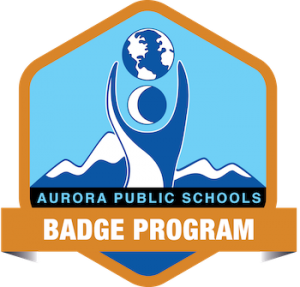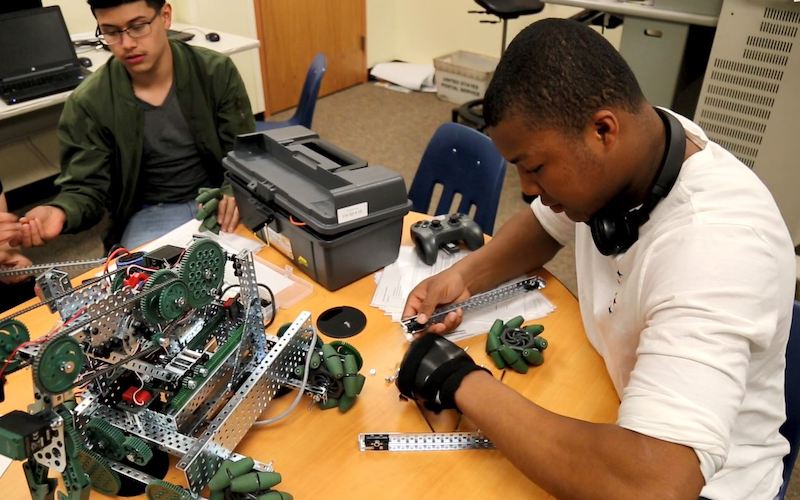Achievement badges are everywhere. If you’re not familiar with this term, just watch your son or daughter (or the person in front of you at the checkout) while they play a game on their smartphones.
Give it a few minutes and you’re likely to see their faces light up with genuine excitement after being awarded a “Tasty Explosion” in Candy Crush or the “Survivor Specialist” achievement in Fortnite.
Badges aren’t awarded arbitrarily; they’re earned. The “Seriously 4.0” achievement in Gears of War 4 requires players to complete a ridiculously long set of tasks – including beating the game on “Insane” difficulty, earning all 141 unique in-game ribbons, etc. But despite the time and dedication required for a seemingly arbitrary digital congratulations, many people are more than willing to try.
It’s this ability to inspire people to put in the time, develop the skills, and, in essence, to learn that encouraged educators to start using achievement badges for learning. But this is probably not news to you, as digital badges have been used in education as early as 2007. That story has already been told.
There is, however, a new chapter, and it’s about how achievement badges are bridging the gap between K-12 students, colleges, and businesses to unlock opportunities for kids who may not otherwise see them.
 Building Bridges Between Students and Their Futures
Building Bridges Between Students and Their Futures
Let’s be honest, the U.S. is in an education crisis. While there are far too many challenges facing our school systems today to discuss in this article, two of the biggest that are relevant here are student engagement and college and career readiness.
In K-12, student engagement is the holy grail of learning. When students are engaged, they’re more likely to learn, to retain information, and to be motivated, among other benefits. But engaging students in the learning process requires teachers to have high technological, pedagogical, and content knowledge, as well as the ability to convey why the subject is important.
At the college level, just 32 percent of students at four-year colleges earn their bachelor’s
degree within six years, according to the National Center for Education Statistics. And only 40 percent of those who do graduate, according to a 2018 study by Bloomberg Next, have the soft skills they need to be successful in the business world.
Aurora Public Schools (APS) in Aurora, CO may have an answer to these two challenges, and it comes in the form of their digital badge credentialing program.
With the guidance of the Director of College and Career Success Dr. Dackri Davis, the Digital Badge Teaching Partner Amanda Fuller, and Education Trainer Noah Geisel, APS has built an academic highway for preparing students for the world and placing them at participating colleges and jobs.
How did they do it? “You have to have a clear vision,” explained Fuller. “The first thing that you need to do is figure out, ‘Why am I doing this? What am I doing this for?’ Rico Munn, who’s the superintendent of our district, once said when presenting about badges that every time you think about how cool or innovative it is, stop. Stop at that point and think about how it can impact and change lives.”
With this in mind, APS started with their desired outcomes. The goals were to better engage and motivate students, get them college and career ready, and create more opportunities for students after graduation. They then compiled a list of core skills colleges and employers consider to be critical to success. Then they designed a digital badging program around those skills.
APS chose badges for two reasons. The first is digital badges are known to increase student engagement, motivation, and persistence. Beyond that, badges help tie what’s being learned to real skills that students recognize are relevant to their lives.
The second reason APS chose to use badges is that they give teachers and students the ability to tell a different story. In most schools, a student’s story generally only consists of transcripts with summative grades and SAT or ACT scores.
“The transcript as it’s used today is very outdated,” explained Lesley Voigt, associate director at Digital Credentials Institute. “It simply lists a course name and the grade; and must be requested and sometimes paid for to obtain.
“Badges allow the employer to actually see the skills that were learned versus a generic class name,” continued Voigt. “These badges are owned by the individual who earned them, and can be organized in whatever manner works best for the end-user.”
But this is only if the employer recognizes the value of the badges students are earning.
Taking Digital Badges Beyond the Classroom
Digital badges are nothing new to education, but this next crucial element to APS’s program is where they separate from the rest of the pack. APS recognized the need for colleges and employers to buy into their badges as legitimate academic credentials, so they actively courted organizations around the country to endorse the program.
After four years, the list of endorsers spans a wide variety of industries – including law, healthcare, the arts, engineering, automotive repair, and more. Plus, these organizations don’t just endorse the badge program, they play an active role in the mentorship of APS students.
By earning “Summit Badges,” or badges at the top of a particular category that require mastery of multiple sub-achievements to unlock, students receive “Career Exploration” experiences with colleges and employers. They get a chance to see what life is like at that organization, meet key decision makers, and may even score an internship.
“The opportunities for career exposure are among the most impactful pieces of this program,” explained Noah Geisel, who helped with design and continues to help with implementation. “One of our first high schoolers to earn a Summit Badge got to go to Universal Mind, a Denver-based UX/UI shop. It was so cool to watch as his mind was blown by this whole career field of User Experience that he had never heard of. A lot of his teachers might not know about UX/UI, but here he was, learning about how it’s a high growth area that pays well to boot.
“At one point,” Geisel continued, “he noticed a book on someone’s desk and our endorsing partner told the young man that he could have the book if he promised to read it. Years from now, this will be one of the things he remembers from his time as an APS student and none of us will be surprised if he goes on to apply for a job at Universal Mind one day … and when he does, he’ll already have a foot in the door because of this experience which is itself only because of his skills for which he earned a digital badge credential.”
APS’s program is just one example of how digital badge credentialing can expand opportunities for students of all ages and backgrounds, allowing them to explore new passions and prepare themselves for careers they might not have previously considered. And that is what education is all about.











